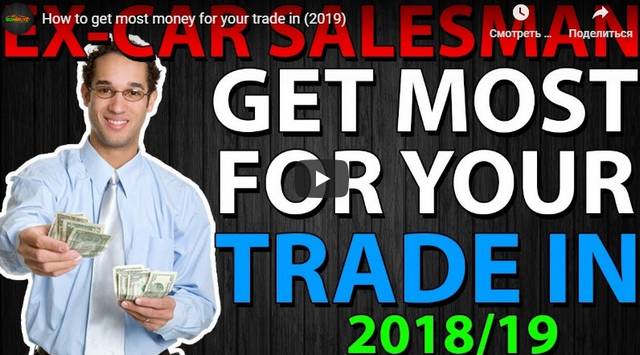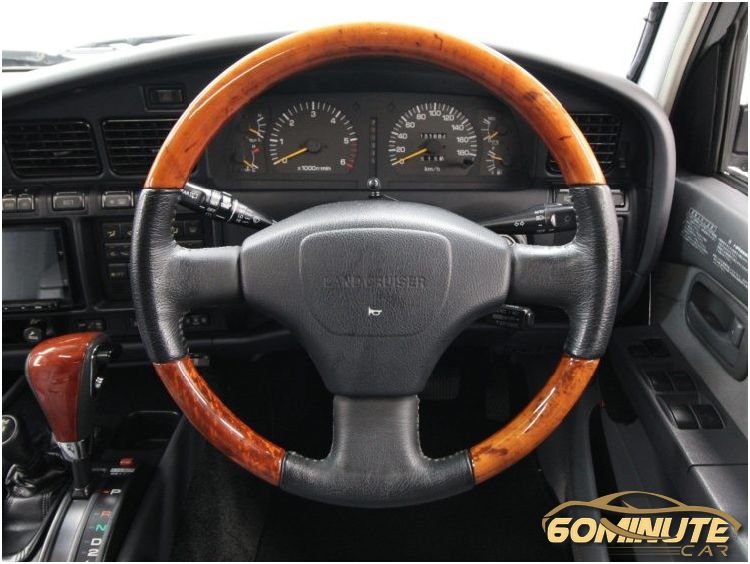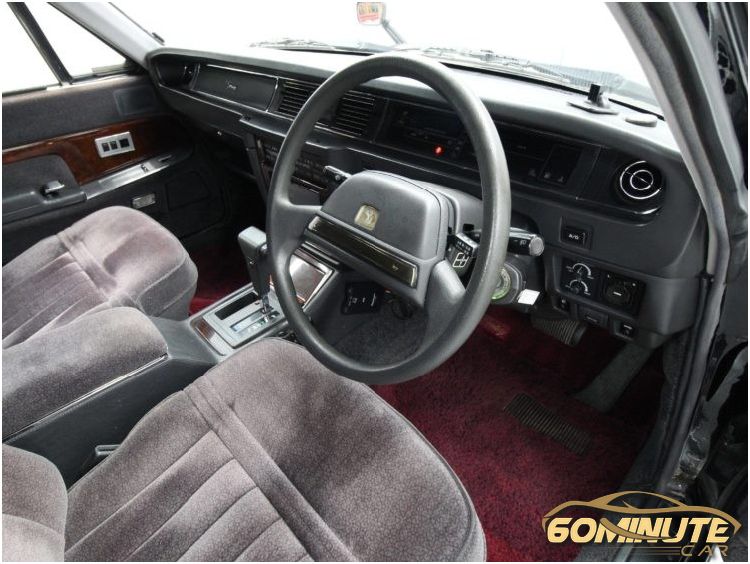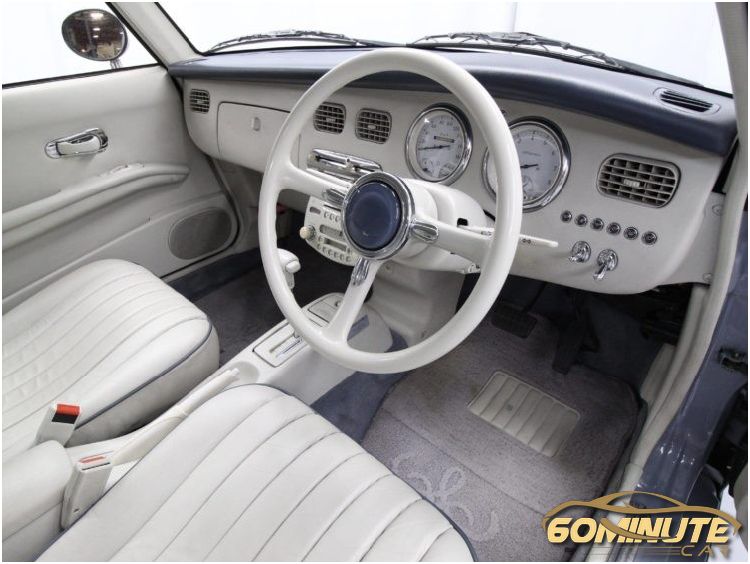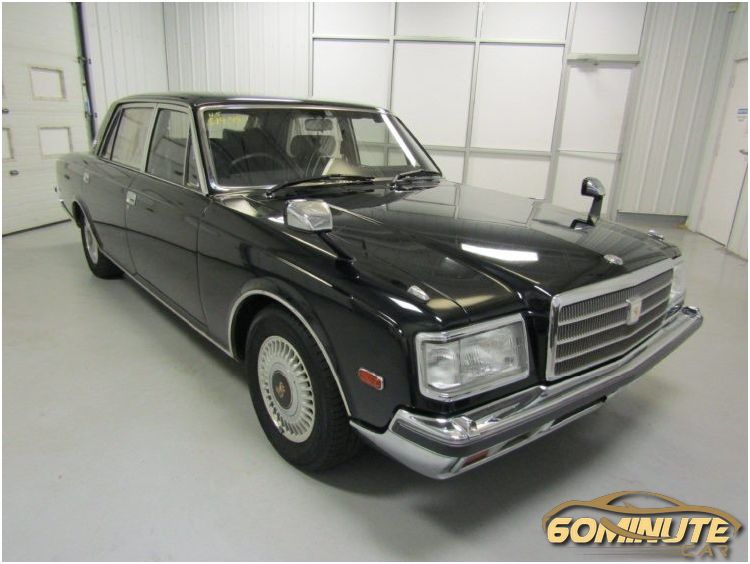How To Get The Most For Your Trade In
Are you shopping for a vehicle? Before the headache of a private sale, or losing hundreds trading your car in at the dealership at the time of sale, first read how to get the most for your trade in. Car sales, car prices, obtaining a car loan, and the various products and services offered by dealers can make some people afraid of the process when it’s time to buy a new car.
Trading in your car can be an experience that leaves you feeling like you’ve been taken to the metaphorical cleaner, but selling your car in a private sale is often a headache that you don’t want or need. If you do choose to sell your car privately, be sure to push for Kelley Blue Book value, and don’t allow yourself to be short sold out of desperation to just be done with the process of selling a used car.
However, when you trade-in your current vehicle, most dealers generally subtract the trade in vehicle amount directly from the purchase price of your new vehicle purchase. This can potentially save you hundreds of dollars in sales tax, making a trade in a smart choice for your wallet. If you choose to use the trade-in price option when you buy a new car, the following tips can help you get into your new car knowing you are aware of exactly how to get the most for your trade-in.
Give Your Trade-In A Good Cleaning
Before you take your trade-in to a car lot to begin price negotiations, give it a good wash and hand wax to make a good impression. Vacuum the interior thoroughly. Your goal is to up the “curb appeal”, and make your trade look like a vehicle that a dealer would like to have sitting on his car lot for sale. A clean, shining, and smoke-free vehicle is much more marketable than the alternative and is a great way to see the full value received on your trade.
Fix Any Dents And Small Maintenance Issues
Repairs needed to small items like windows that don’t roll up or down, dents larger than door dings, and falling headliners are all issues that need to be fixed before you try to get a price on your trade-in. A dealer isn’t going to be able to sell your car on the lot without making the repairs of this nature, which means they’ll have to come out of pocket to make the repairs prior to being able to sell your trade, or it will have to be sold at auction.
Know Your Kelley Blue Book Value
Before you obtain trade-in quotes, do your research. Use your online guides, such as KBB, so you know the actual value of your car both in private sales and trade value. There are plenty of sites that can help you really narrow down the value of your trade so you’ll be confident in the trade amount you ask for.
Properly Maintain Your Vehicle And Keep The Records
Long before you think about trading your vehicle in for an upgrade, you need to ensure that you are having preventative maintenance performed as scheduled on your vehicle. Keep the maintenance records for your vehicle, and be prepared to show that you have not gone 2 miles over on an oil change, or that your tire pressure has never been less than recommended at any maintenance inspection. A properly maintained vehicle is much more valuable than one that has been driven hard and has a spotty service record.
Be Prepared To Shop Your Trade Around
Prior to accepting an offer on your trade, you should obtain at least 3 written quotes from local dealers. This not only ensures that you’re asking a fair amount for your trade, but it also provides you with documentation of the trade value you’re asking to receive.
Skip The Aftermarket And Cosmetic Details
Unless your trade is a Jeep Wrangler and you have equipped it with off-roading parts, you won’t see any return on your aftermarket additions or chameleon paint job. Unfortunately, the expensive cosmetic additions and upgrades are going to end up being a loss when it comes to the value of your trade.
Negotiate Separately
In order to prevent hidden costs that could offset the value of your trade-in, keep your negotiations separate. Once you have established the trade-in value and the dealer has drawn up the paperwork to purchase your current vehicle, then you can go ahead with the negotiations on the new vehicle purchase. This ensures that there is no “sleight of hand” that could end up skewing the value of your trade by tacking additional fees or hidden costs onto the front end of the purchase.
Most dealers use the “four square” approach to your deal, combining trade-in, auto loans financing, down payment, and the new vehicle purchase amount to come up with the final price on your vehicle purchase. By separately negotiating and treating it as two transactions, you’re eliminating the ability to hide figures in another square, possibly giving you less for your trade than you’ve agreed upon.
You don’t have to trade your vehicle to the dealer you’re buying your new car from, and that is important to remember. If you cannot agree upon a trade value you’re satisfied with, simply do not agree to the trade.
Hey, how’s it going? My name is Dan. Then I used to work at the biggest dealership in the country and now I teach fine folks like you how not to get f•••ed when buying their car. Now, in this video, I want to talk to you about the most important thing about trading in your car, and that’s don’t trade in your car. But since you clicked on this video and you’re looking to get most money for your trading, I’ll tell you how to do that.
Step number one, don’t trade in your car to a dealership. Why? For two different reasons. Number one, you’re going to get f•••ed because they won’t give you a dull amount of money that they could have given you. You’re not going to get what you truly deserve for your car. You’re not going to get the amount of money for your car. What your car’s worth. An open market. That’s number one. You’re just gonna get f•••ed. Financial reason number two, you don’t want to give your car to a dealership is because imagine this scenario. You sell your car to a dealership. Three months later, your kid, your nephew, your grandkids, your co-worker, your neighbor, your friend is going to go to that dealership and buy your car for 30 percent more than what you sold it to them for four, three, five, seven thousand dollars more than what you sold them the car for. To me, in my world, in my universe, that’s just wrong. Why would they f••• my neighbors? Why would I f••• my friends over? Why would they f••• my relatives over? Why would they do that? Do you know how many people would love to buy your car? People that need to buy your car a lot. I s••• on the people. They’re just not going out there advertising. I need their car. I need the car. Just today I was at Walmart and I accidentally bumped into a lady. We started talking and she said, I’m looking for a car. Look, she’s not going out advertising that I need a car. No. People don’t do that. Your car could be so much better in somebody else’s hand instead of a f•••ing dealership. They’re gonna use your car to screw somebody.
That’s just my personal opinion. Now let’s dive into mean potatoes. How do you get the most for the car that you don’t want? And this is your finance car, your leased car, a car you were upside down on or whatever the situation is. First one, if you’re upside down on the car, don’t worry about it. We’re going to talk about it just later. I want to talk about the most common issues with leasing a car and financing your car. So what you do is you post your car on Craigslist and Facebook store. That’s it. It’s just that simple. It’s going to take one hour of your time, one hour, 60 minutes, and you’re going to get thousands and thousands of dollars more than what you would’ve got from the dealership. I don’t care how much you make an hour. I don’t know. Even let’s say you make one hundred dollars an hour. Not a problem. Even if you one of your hours is still worth one hundred dollars. Let’s say you post on Facebook and Craigslist that’s going to take you on now. You take pictures. You write the description. Then you wash your car whole entire hour. Let’s say some people will come and take a look at a car and they decide not to buy it. And they’re going and you’re going to spend, you know, five, maybe six hours with the whole sales process of your car. And then after five or six hours, you’re going to sell your car. OK. That’s still five hundred dollars in your pocket. Now, how many of you are making one hundred dollars an hour? Maybe one or two, most people get paid about twenty five dollars an hour.
If you’re making less than twenty five dollars an hour, what the f••• are you doing? Taking your money, your family’s money out of your pocket and out of your family and giving that to a dealership. Why would you do that? I don’t understand. That’s like you having an old classic guitar and you go down to a pawn shop and they tell you. Well, this DA is worth a hundred thousand dollars, but we’ll give you 50 cents for it. Would you sell it for 50 cents? No. Why the f••• would you sell it for 50 cents? Put that guitar onto internet on two auctions and get the most out of it. Let your family have the money. Not somebody else. Let’s say you don’t have the time to sell your car. Not a problem. I got your back. I’m thinking for you. Because I like you. And I really, truly want the best for you. Like I really do. Do you know anybody, anybody at all that you can trust with your car? That’s not going to steal your car. And they know how to use a cell phone. You have kids, nephews, neighbors that you trust. Friends. Do you have friends? They can sell your car. You just cut them in a little bit. You tell me. I’ll give you five hundred bucks if you sell this car. They’re going to get on that freaking opportunity like no other, especially if it’s a f•••ing teenager like a 14 or sixteen year old.
They’ll be texting. They’ll be doing all the Facebook fricking advertisment. They’re going to be doing everything for you and you’re going to get the most money for your car. And the best part is you just help somebody make five hundred dollars, which wasn’t a f•••ing sleazya••salesman. It was one of your friends or relatives. So that’s how you sell your car for most money. You sell it to a private party on Craigslist or Facebook. That’s how you do it.
Now, let’s talk about some common mistakes that people do. First, they take s••• photos. That’s number one. Learn how to do proper photography. Open the hood all around the car. One picture of the rim. One picture of the room. You’ll need for pictures of the rooms unless they’re all for different rooms. Your rooms are the same. Okay, then take a picture of the tire front tire. No need to take a picture of the rear tire because front tires are worn more. So front tires are what you should be looking at. Even when you’re buying a car next interior. Take some pictures of it too. You shouldn’t have twenty five good pictures. You’ll need a fancy camera. What are people looking for Delucchi for? What kind of options your car has? So take picture of the heated seats buttons. Take the picture of the odometer, take the picture of the radio. Take the picture of whatever you think is cool about your car besides just obvious. If you have something that’s really cool about your car, like heated seats, cool seats, keyless entry, remote start, backup cameras, just normal features. Next, find 10 cool things about your car and list them in the description. Simple as that. No need to post that your car has airbags. Every car has airbags. No need to post that. Your car has a radio. Every car has a radio.
No need to post that. You have a Bluetooth like. Ninety nine percent of cars now these days have Bluetooth only things that are not standard. And they’re kind of cool if you like them. Guess what? Somebody else is like them. It’s only common sense if you enjoy heated seats. Do you think somebody else is going to enjoy it? Heated seats? Do you think somebody else is going to enjoy heated steering wheel? Somebody else is going to enjoy. I know. Keyless entry. Of course they will. So put that in a description. Everything is going to take you less than an hour with a car wash. Spend ten dollars to have your car washed and back in ten bucks. Come on. You can afford to do that next. If you’re financing a car or you’re leasing a car, you can still sell your car. Here’s what you do. You just do exactly the same thing. But if you’re leasing the car. Find out how much the dealership is gonna give you before your lease is over. So they’re going to take over your lease or you finish the lease and you sell the car to them for more than what the dealership was going to pay you. You’d like literally what happens with the lease is you own the car, but the dealership is going to buy it from you after your lease is over. You don’t return the car. You call it a return. The reason dealerships called a return and they want you to use the word return. It’s as if you don’t own the car when you’re leasing the car. You actually own it for a small amount of time when you’re gonna be returning the car. What really happens is dealership is buying it from your bank or from you? From you and your bank.
You have a partnership with your bank going on. They’re going to buy it for preset amount of money that they agreed three or four or five years ahead. What you want to do is you want to find out how much they’re going to buy it for, let’s say eighteen thousand dollars. Then you just make an ad on Craigslist. I’m returning a lease car in two months. Dealership is offering me 18 five. Will anybody give me more than that? That’s it. If somebody gives you even 18, you made six hundred dollars. That’s kind of a cool deal. And here’s the best part. You made six hundred dollars. You didn’t have to go to a dealership and work with those f•••ing sleazy salesmen trying to sell your lease. You another car. But the most important thing that you did. Really, it’s more important. And six hundred dollars you just made. You just did the right f•••ing thing. Instead of you selling a car to a dealership, you sold it to person. That’s somebody you need. To me, that’s more important, that’s making six hundred dollars. But, you know, everybody’s different, everybody has their own opinions. Now, what if you’re upside down on the car deal? So what that means you bought the car for so much more than it was worth. Some slicka••salesman fooled you into buying a car that was overpriced. Now the car is worth what it’s worth, whatever people are willing to pay for it. That’s what the car’s worth. The reason you’re upside down on your car is because you paid too much for it. It’s not because the market crashed.
No. The market. That’s fine. I got to tell you, like I hate to be mean, but it was your fault for buying a car for so much money. You just got a really s•••ty deal. So what you do is you there you have a couple of different options. Number one, you can keep paying for the car until you pay it off and you drive and drive it, drive it, drive it until it hits like hundred fifty thousand miles. Now, if you’re selling your vehicle because of bad fuel economy, like a pickup truck or SUV or whatever the situation is, you just need to get rid of it.
The next car you buy should be really, really cheap. $5000 car, just really cheap. Teeny tiny car that you can drive for next four or five years and save money to get out of the loss that you just took. There’s only two options, really. You either drive the car that you have for a very long time, then you’re going to get the money out of it or you sell it. Take a loss. But your next car has to be really, really, really cheap. That’s it.
And you can actually watch a video on my YouTube channel. Five thousand dollar car clicked a button right there. And that’s going to take you to the video, which is about five thousand dollar cars. It shows you how to buy five thousand dollar cars. Simple as that. So I think I went throughout everything as much as they could. If you have questions, you can contact me in Facebook or Instagram. Just send me a GM like literally. I will answer your questions. You’ve got pictures. Send them. You’ve got videos. Send them. You want to face time me do it like I’m actually here to help you guys. Hey, if you enjoyed this video, give me a thumbs up below and lick the subscribe button over my head or watch one of those two videos if you want to see more money saving tips about cars. This is Dan with 60 Minutes car. I’m signing out and I’ll see you on the Internet.

